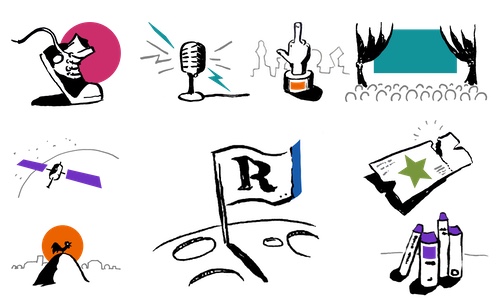One Megawatt twentyfourseven for six months? Fieldtest starts in January 2023. All details here.
Sounds revolutionary? Indeed it is. However we look for a partner that can take the grid-conform load for max 6 month and help us monitoring the device. This is an opportunity for heavy load industries or off grid pioneers on controlled low cost for usuable energy.
THE TECHNOLOGY

Guiding Principles
The main principle underpinning the Electromagnetic Generator operation is Faraday’s Law of Induction which stipulates that when a coil is — or coils of wire are — exposed to varying magnetic fields, a voltage will be induced into the coils.
Similar to the principles guiding the operation of conventional generators – where a prime mover spins the rotors to produce varying magnetic fields at the stator of an alternating generator – EG simulates the same effect without the need for a rotating magnetic field, making use of electromagnetic induction feedback to contract and expand the magnetic fields in the main reactor, by making use of a network of reactors and transformers through a patented regenerative electromagnetic process.
Stationary Power Generation Application
EG stationary power generation systems are scalable, portable, have minimal moving parts, do not make use of fossil fuels as input, and do not emit harmful wastes or emissions to the environment. More significantly, EG can provide a stable electricity supply on a 24/7 basis at a higher capacity factor than current market alternatives and can easily operate in various locations due to its modular nature and small physical footprint of < 10 m2/MW. The EG has also been designed to be stackable to enable increases in output capacity without compromising space. From contract signing to operations, EG benefits from a shorter lead time of 3-6 months compared to other energy generation sources.
To better understand how EG operates, it is worth revisiting the mechanisms behind the operation of conventional generators, which illustrate how both the latter and the EG produce the same varying magnetic fields to generate electricity in compliance with Faraday’s Law of Induction.
Conventional Methods of Power Generation
A brief description of the parts of a conventional generator and how they deliver varying magnetic fields on the stator core and windings are outlined below:
| COMPONENT | PURPOSE |
|---|---|
| Prime Mover | Responsible for the rotation of the main rotor and exciter rotor |
| Alternator | Composed of a stator (stationary part) and a rotor (rotating part) |
| Exciter | Composed of a stator (stationary part) and a rotor (rotating part) |
| Automatic Voltage Regulator (AVR) | Responsible for the regulation of voltage and frequency |
With the prime mover of a conventional generator rotating the main and exciter rotor located at the same shaft at rated speed, voltage is induced on a brushless exciter rotor due to the residual voltage and magnetism in the exciter assembly. This voltage on the rotor is rectified by a rectifier to a direct current voltage. The DC voltage will be utilized by the main rotor for excitation, thus producing a set of north and south electromagnetic poles on the main rotor.
The main rotors of the alternator are arranged in such a way that they are alternating each other as north and south poles. When pairs of rotor poles are rotated by the prime mover, a varying magnetic field strength is induced on the main stator thus producing an electromotive force (emf), formerly referred to as potential difference and presently commonly known as voltage measured between the conductor terminal lead wires of the stator of an AC generator. Once a load or load banks are connected to the terminal leads of the stator winding, a current will flow on this specific connected load. This current produces a magnetic field that interact both on rotor and stator, generating alternating forces of attraction and repulsion between them.
These aforementioned forces intensify as the connected loads are increased, directly opposing the forces delivered by the prime mover causing it to slow down. As a consequence, the prime mover (after an increase of electrical load) has to exert more power to counter these opposing forces of reaction (in the alternator assembly) in order to maintain the design rated speed to regulate voltage and frequency.
This set up of conventional power generation (alternator coupled to a prime mover) precludes the size of the prime mover to be smaller than the alternator power, since it is consistently required to overcome the forces of reaction caused by the magnetic forces on the alternator by a given load. Upon closer analysis of the interactions involved, however, we begin to understand that the source of the varying magnetic fields on the stator does not lie with the prime mover alone, but actually with the excitation source that produces the magnetism on the main rotor assembly.
Simply put, without the excitation source, there will be no varying magnetic fields on the stator – even if it is rotated by the prime mover – and consequently, no emf or voltage output between the stator terminal lead wires. This demonstrates that the prime mover operates merely as part of the whole process enabling the DC excited main rotor to induce varying magnetic fields on the stator.
The excitation power of the exciter assembly is the main source of electromagnetism, producing varying magnetic fields on the stator assembly through the rotation of the main rotor. Hence, in conventional generators, the prime mover does not accomplish the job of power generation by itself but is, in fact, aided by electromagnetism.
This process can be easily summarized by returning to the current definition of electricity as ‘the movement of electrons along a conductive material or pathway of electrical resistance.’ This very definition already suggests that the source of electricity even in conventional generators is primarily the electrons abundant in space and in the environment around us. In the case of conventional power generation, the prime mover acts with the aid of magnetism to harness, harvest, extract or pump these very electrons from the environment. As such, we may even refer to the conventional generator in the real sense as an ‘electron pump’, much like a water pump or air compressor operates through a similar prime mover.
Measuring the magnitude of the excitation power source against the output of the stator in the conventional generator yields a significant ratio. Calculating ratio by dividing the main stator output by the excitation power yields the coefficient of performance (COP). COP in conventional generator will be in the vicinity of more than a hundred (100) times.
EG Power Generation Principle of Operation
| COMPONENT | PURPOSE |
|---|---|
| Main Reactor | Where the varying magnetic fields are being induced and manipulated |
| Reactive Reactor | Where a bucking magnetic field is being produced |
| Compensating Reactor | Where a boosting magnetic field is being produced |
| Resonating Reactor | Responsible for tuning the main reactor with the given load |
The above-mentioned components work as a whole system to produce an expanding and contracting magnetic field on the main reactor by means of electromagnetic feedback induction phenomena. They are connected in such a way that allows for the simulation of a conventional generator’s production of varying magnetic fields on the stator. In the case of EG, however, this is accomplished on the main reactor without the use of a prime mover and, instead, with electromagnetic field-induced feedback. The varying magnetic fields in the main reactor are being manipulated by the use of the three other aforementioned reactors. With a current flowing on the windings of each reactor, a magnetic field is produced and an electromagnetic field-induced feedback can be manipulated to expand and contract the magnetic field in the main reactor in resonance with the connected load.
During the initial stage, an external AC or pulse current is needed to produce electromagnetism in the main reactor assembly that serves as the initial excitation. This electromagnetism on the main reactors, with the induced electromagnetic feedback reaction of the three other reactors, produce the desired varying magnetic fields or forces on the main reactors. The phenomena manifests when a current is present on each reactor assembly, thus producing each their respective magnetic fields or forces.
Once the unit has started and a load or load banks are connected to the output via a smart seamless on-off-on grid inverter, high-intensity magnetic fields are produced within the reactor assembly directly proportional to the load current. These magnetic fields or forces being produced by the load currents on each of the three reactors produce the desired effects of varying magnetic fields on the main reactor through active manipulation. By means of active manipulation of the respective magnetic fields or forces of the three reactor system, the induced varying magnetic fields in the main reactors can be increased in resonance with the given loads. This process is attained by manipulating the respective magnetic fields of each of the three individual reactors to induct an additive or subtractive magnetic field on the main reactors.
Since the system has no revolving parts and the forces of reaction by the magnetic fields – which prove detrimental to the conventional generator, preventing it from generating a COP > 1 – are instead being used by the three-reactor system of the EG to produce varying magnetic fields on the main reactor, necessary to cancel out the back emf induced by the connected load and inducing an emf necessary to power up the connected load allowing the COP of the system to exceed 1 net or even achieve a measured value of 3.15. The system is currently designed with a loop back inverter, sourcing the excitation from the main output of the system to enable the system to be self-sustaining after just an initial round of excitation. As an example, with the measurement of NPC having the loop back excitation after start up, the net output of the system will be more than 200% 2.
The initial source of excitation can be turned off or diverted to the main output (after the EG system generates the initial output with the load or group of loads connected) through synchronization, augmenting the capacity of the main output of the EG, as in the case of a renewable energy source. If the initial excitation is being handled by a battery bank through a battery inverter, the same battery bank will be disconnected once the EG is running. The battery bank will then be charged by the automatic charging system built into the EG system, maintaining necessary charges for future black-starting in the event of the system tripping or in compliance with the EG’s regular maintenance schedule. As such, the EG system is ideal as a distributed power generating unit with grid black-starting capability and embedded power-generating units.
Main Features
The EG device, as designed, has the following features which distinguishes itself from existing renewable and conventional sources of power and energy:
- Produces electricity on demand – without availability constraints associated with hydro, wind and solar power and other renewable energy supply
- Seamless on-grid off-grid operation – power generation can be switched from isolated loads to utility network load instantaneously without the need for shutdown
- Quick start-up and shutdown – less than 60 second depending converter controls and load or network conditions
- Black start-up capability – through local power supply such as UPS
- Compensated parasitic load – the output can be increased to supply and offset the internal losses of the device
- No inherent pollution – no green gas emission whatsoever
- Low electromagnetic emission – emf intensity is comparable to personal computers and cellular phones
- Low noise and heat emission – primary source of noise are converter filters and cooling fans
- Compact and portable – footprint is < 10 m2 and a height of 2.6m
- Rapid mobilization – can be packaged to fit a 20-foot container to facilitate shipment and installation.
- No special conditions for location – installation and operation have no site-specific environmental constraints
- Scalable to larger capacity – ability to operate in parallel with multiple units and controlled individually or as a group
Electrical Performance Specification
Introduction
For the purposes of defining the performance specifications of the EG System and its major electrical components, refer to the simplified block diagram in Figure 1.

The term EG system (or “System”) is used to refer to the EG (or “Reactors”) and its accessories that will allow the said Reactors to connect to the grid or local loads and generate electrical power and energy.
The EG System is composed of three major electrical components which performs the following functions:
- Interface Bus – switching mechanism for the connection and disconnection of the System to the grid or local loads for the purpose of transferring power and energy.
- Input Converter – composed of a back-to-back rectifier and inverter feeding excitation power to the Reactors while initially extracting power from the grid or any of the following external sources like a battery bank, ultra-capacitor, solar farms and wind farms and finally from the Output Converter of the EG SPG unit for its continuous excitation throughout the operation. The AC-DC-AC conversion allows correction of voltage deviations, power factor, phase imbalances and harmonic distortions at the Reactor input so that the power and current drawn by the excitation of EG System from an initial source like a built in battery, ultra-capacitor bank and solar panels are minimized and stay within acceptable power quality standards.
- Output Converter – composed of a back-to-back rectifier and inverter receiving output power and current from the Reactor. The AC-DC-AC conversion enable the control of the EG System output power to serve the demands of the grid or local load with correct quantity and quality. Switching operation at the Interface Bus is also controlled by the Output Converter.
Technical Data
| MAIN OUTPUT SPECIFICATIONS | |||||||||
|---|---|---|---|---|---|---|---|---|---|
| EG Generator Net Output Capacity | 500 / 1000 kW peak | ||||||||
| Min/Max Output Voltage | 400 / 416 V @ 50Hz, 460 / 480 V @ 60Hz at ± 1% Regulation of nominal | ||||||||
| Min/Max Frequency Range | 50 / 60 Hz @ ± 0.01 Regulation | ||||||||
| Rated Nominal Current | 1000 / 2000 A | ||||||||
| Max Short Circuit Current | 1500 / 3000 A | ||||||||
| Phase | 3 phase, 3 wires / 3 phase, 4 wires | ||||||||
| EXCITER SPECIFICATIONS | |||||||||
|---|---|---|---|---|---|---|---|---|---|
| Loop Back Inverter | Seamless ON / OFF smart inverter with actice front rectifier | ||||||||
| Output Power | 60 / 120 kW peak | ||||||||
| Output Voltage Range | 400 ... 520 V | ||||||||
| Input Voltage 400 | 400 ... 520 V | ||||||||
| Frequency | 50 / 60 Hz @ ± 0.01 Regulation | ||||||||
| Phase | 3 phase, 3 wires | ||||||||
| MAIN INVERTER SPECIFICATIONS WITH ACTIVE FRONT RECTIFIER | |||||||||
|---|---|---|---|---|---|---|---|---|---|
| Inverter Rated Capacity | 600 / 1200 kW peak | ||||||||
| Min/Max Input Voltage | 460 / 540 V AC | ||||||||
| Min/Max Output Voltage | 400 / 416 V @ 50Hz, 460 / 480 V @ 60Hz at ± 1% Regulation of nominal | ||||||||
| Rated Nominal Current | 1250 / 2500 A | ||||||||
| Min/Max Frequency Range | 50 / 60 Hz @ ± 0.01 Regulation | ||||||||
| PWM Frequency | 4 kHz | ||||||||
| DC Over Voltage | Yes | ||||||||
| AC Input Over Voltage | Yes | ||||||||
| Over Temperature Heat Sink | Yes | ||||||||
| Over Temperature LC Filter | Yes | ||||||||
| AC Input Undervoltage | Yes | ||||||||
| AC Input Over Frequency | Yes | ||||||||
| AC Input Under Frequency | Yes | ||||||||
| AC Input Overcurrent | Yes | ||||||||
| AC Short Circuit | Yes | ||||||||
| Ambient Temperature Range | 0ºC ... 45ºC | ||||||||
| Maximum Ambient Temperature Range | 50°C | ||||||||
| Relative Humidity, Not Condensing | 15% .. 95% | ||||||||
| Maximum Altitude | 2000 hm | ||||||||
| Maximum Noise Level | 60 dB | ||||||||
| EG | |||||||||
|---|---|---|---|---|---|---|---|---|---|
| Input Excitation Voltage | 400 ... 480 V programmable | ||||||||
| Rated Excitation Current | 150 / 300 A | ||||||||
| Min/Max Frequency Range | 50 / 60 Hz @ ± 0.01 regulation | ||||||||
| Phase | 3 phase | ||||||||
| Insulation | Class 200 | ||||||||
| Maximum Temperature Rise | 150ºC | ||||||||
| Cooling System | Water / glucol | ||||||||
| System Enclosure | customized containerized van | ||||||||
| Protection | IP 56 | ||||||||
| Total Weight | 12.000 kg (500 kW) / 15.000 kg (1 MW) | ||||||||
Summary
Highlights
- A product of over 20 years of research and development, the EG system is currently the most efficient renewable energy technology in the market, with an expected 96% capacity factor coupled with transparent O&M costs.
- EG units use any energy source, only for system start up and re-starts, thus granting our operations relative independence from feedstock inputs, creating significant cost advantages.
- The EG power generation system stands apart from conventional power generation not just because of its significant cost advantages, but because of its unique modular unit design which allows for scalability, its exceptional ability to harness ambient energy allowing for 24/7 operations regardless of location or environmental conditions, and its freedom from harmful emissions, wastes or pollutants.
Field Test
Would you like to apply for the fieldtest?





Conditions for participation
The device is already on its sea way to Europe and will arrive within next 3..4 weeks. On interest be fast and get in touch now! This could be a revolutionary chance.
- You have an energy demand of certain MW per hour in your company?
- You have about 30m2 space on groundlevel to put the device indoor?
- You accept field test for next 6 months?
- You accept a fully operational but not yet EU commercial classified device?
- You can accept payment of $0.06 / kWh based on 1MW load and a license fee upfront?
- You are ready to start January 2023?










